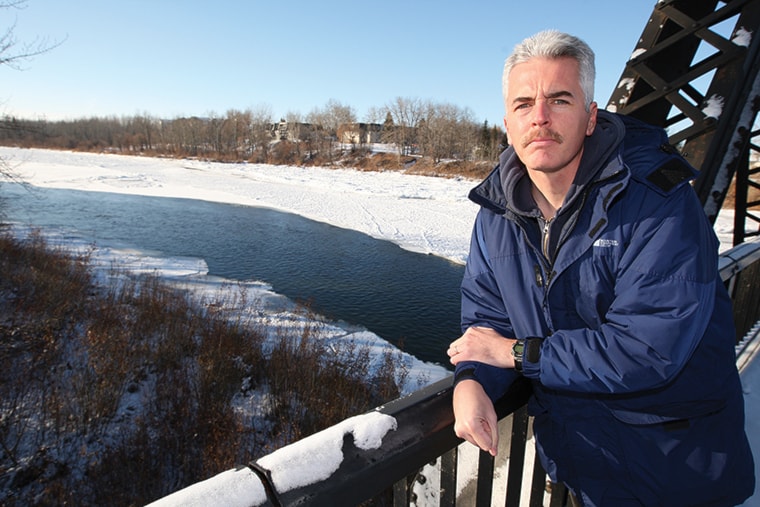When trace amounts of the chemical cocktail spawned by a river oil spill reached the City of Red Deer’s water treatment plant last June, it wasn’t clear what would happen.
Water treatment plants are designed to handle various biological and parasitic threats to safe drinking water, not hydrocarbons such as benzene, toluene, ethylbenzene and xylene.
“We weren’t sure what was going to happen when we did see the hydrocarbons coming down (the river),” said Chris Teichreb, an Alberta Environment water quality specialist.
“We thought maybe the water filtration they have at the plant will remove some of these hydrocarbons.”
However, later testing showed the Red Deer’s water treatment plant and the Anthony Henday plant in Innisfail were not effective in removing hydrocarbons.
“Concentration of benzene, toluene or xylenes did not appreciably decrease from raw intake water to pre-chlorination to post treatment,” says an Interim Water Quality Report from Plains Midstream Canada and Alberta Environment and Sustainable Resource Development issued 11 days after the June 7 spill of up to 3,000 barrels of light sour crude oil.
On the plus side, drinking water was affected very little by the much-diluted hydrocarbons.
“While drinking water plants did not appear to remove significant quantities of the petroleum hydrocarbons in their treatment process, concentrations of all parameters examined were well below Health Canada drinking water guidelines and thus were unlikely to pose a risk to human health.”
Teichreb said the water treatment plants are not designed to filter out hydrocarbons, which are not normally present in the river.
“Having said that, they do have the capability or they do have a response system that if the concentrations did get high enough they could implement some additional measures to remove the hydrocarbons,” he added.
“But they didn’t get to the point where they needed to do that,” he said, noting toluene levels were about 10 times below minimum water quality drinking standards.
Drinking water standards were not exceeded in almost all test samples. Although at Gleniffer Lake, where booms were put in place to stop oil flowing downstream levels of toluene, did exceed drinking water guidelines in one sample the day after the spill, according to the report.
Teichreb said in Red Deer a system is already in place to deal with hydrocarbons, although it would take some time to put into action. At Anthony Henday, a portable system would have to be brought in.
Alberta Health Services was also ready if necessary to shut down the plants if hydrocarbon levels exceeded drinking water guidelines.
For a time, water could be supplied from reserves kept in offsite storage reservoirs. After that, if additional filtration was not in place, drinking water would have to be trucked in, as it was for a number of days for a pair of resorts on Gleniffer Lake.
Teichreb described the water treatment test results as a “bit of a wake-up call” during a recent presentation to the Red Deer River Watershed Alliance.
Asked if the results that showed concentrations changed little after treatment was a surprise, Teichreb replied it had been a “bit of an unknown because we haven’t really tested for this in the past.”
The results have led to follow-up work to ensure that drinking water plants have their emergency plans in place to adapt to another spill, and perhaps one with much higher concentrations.
A provincial strategy is in place to look at drinking water through the entire process from being drawn from rivers to household taps.
However, given the cost of running additional systems to handle hydrocarbons, it doesn’t make sense to make them a requirement when they are only present because of some sort of mishap.
“It’s more (focused on) emergency preparedness, to make sure that if we do get these spills then we are prepared to handle it.”
Meanwhile, the province is awaiting the results of a long-term monitoring program required of Plains Midstream. Those samples were collected in late October and have been sent away for processing.
Results are expected in the new year, and if they show damage to aquatic life the company may be required to undertake further remediation work.
pcowley@www.reddeeradvocate.com
